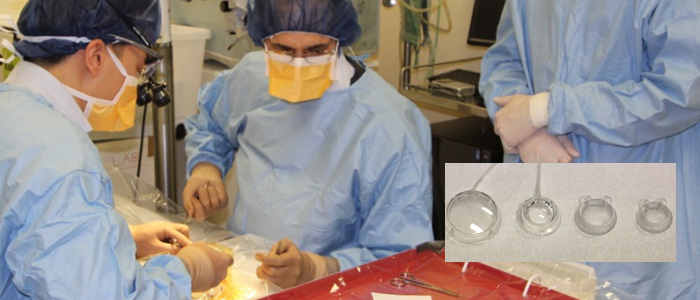News
3D printing bone tissue
Jun 28 2022
Glaucoma is stealing the sight of hundreds of thousands of Australians and is the second leading cause of blindness worldwide.

The condition is usually caused by excessive pressure within the eye, leading to optic nerve damage, and as the population ages the number of people living with the disease will increase markedly.
A common glaucoma treatment is to insert a drainage device within the eye that relieves the pressure.
Controlling the eye pressure following this method depends on the porosity of a capsule that surrounds the base of the drainage device.
3D printing to the rescue
A recent collaborative investigation into the porosity of a novel drainage device was undertaken between the Centre for Eye Research Australia (CERA), ARC Centre of Excellence for Electromaterials Science and the Australian National Fabrication Facility (ANFF).
The study focused on an approach developed by the partnership that accelerates implant design and allows testing of different device features and their effect on the porosity, which could lead to much better glaucoma treatment.
Head of CERA’s Glaucoma Surgery Research, Associate Professor Michael Coote said the development of the 3D printed implant at ANFF (pair pictured at right) was crucial to the success of his team’s method.
“Direct measurement of capsular porosity is the key statistic of glaucoma surgery,” he said.
“It was very difficult to achieve initially, but the development of the two-tubed (printed) implant solved this.
“We can now measure capsular porosity with great accuracy, giving us reproducible and interpretable results.”
Assoc. Professor Coote said the versatility of 3D printing was what made the choice of manufacturing method clear.
“We wanted to develop different sizes and designs with the short turnaround time that printing affords,” he said.
“We also needed to make iterations and to confirm that they were fit for purpose.
“3D printing was able to deliver in ways that no other system could.”
Pushing the limits
ANFF’s Doctor Stephen Beirne said the devices produced stretched the potential of the burgeoning field, with work to continue.
“We need to be able to increase the detail and complexity of features,” he said.
“This is pushing the boundaries of current fabrication capabilities.”
The method has so far only been trialled on rabbits, but Assoc. Professor Coote said his team was now able to better understand the key factors of glaucoma surgery, with their sights fixed on being able to create an implant for humans.
The study was published in JAMA Ophthalmology, 2015.













